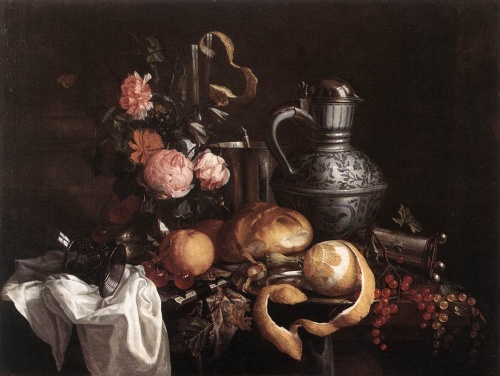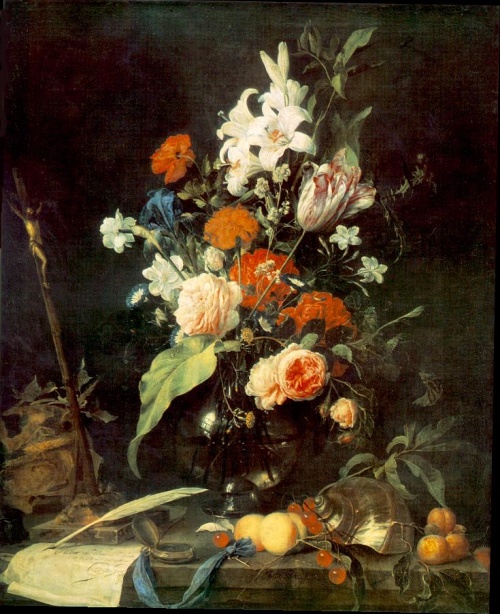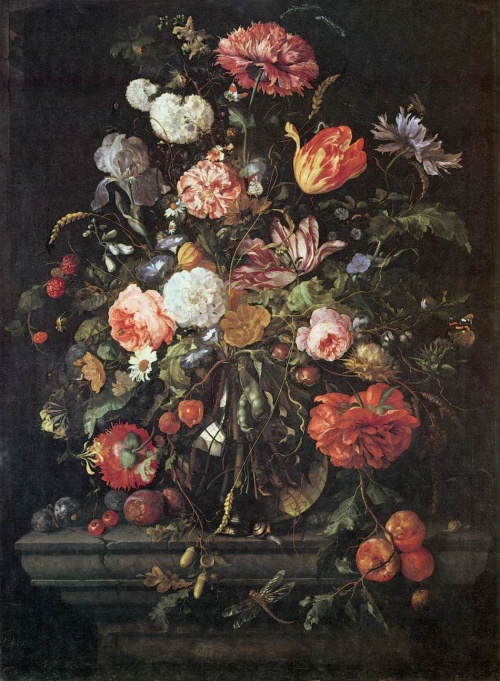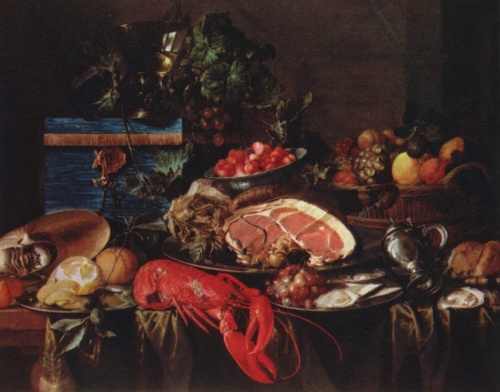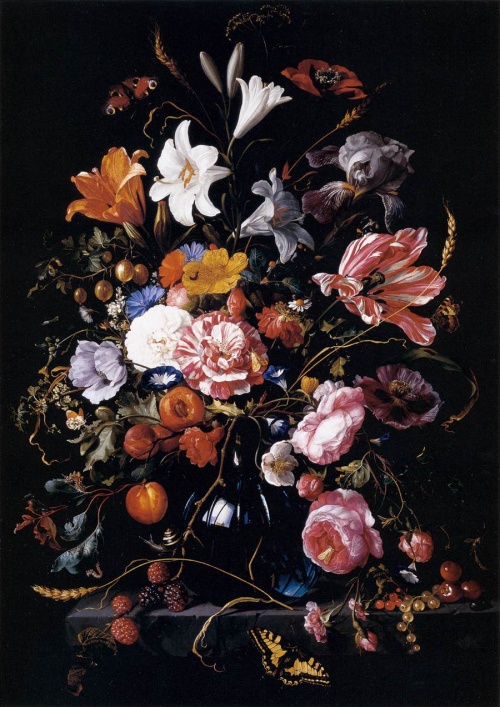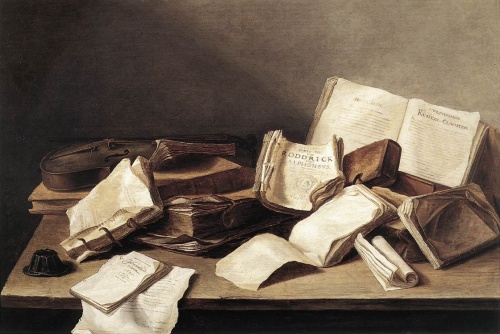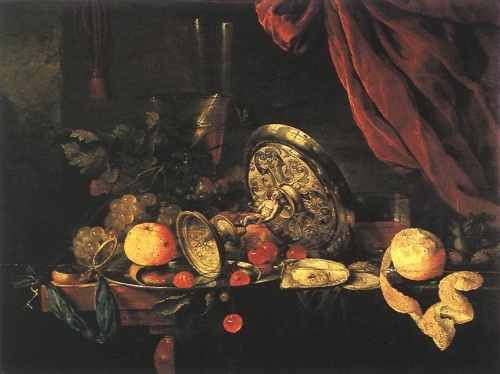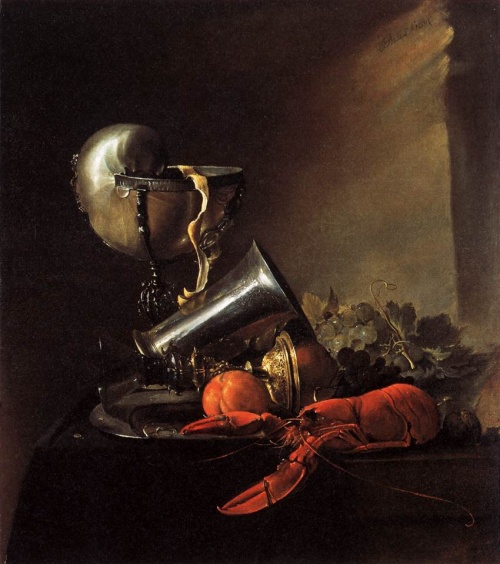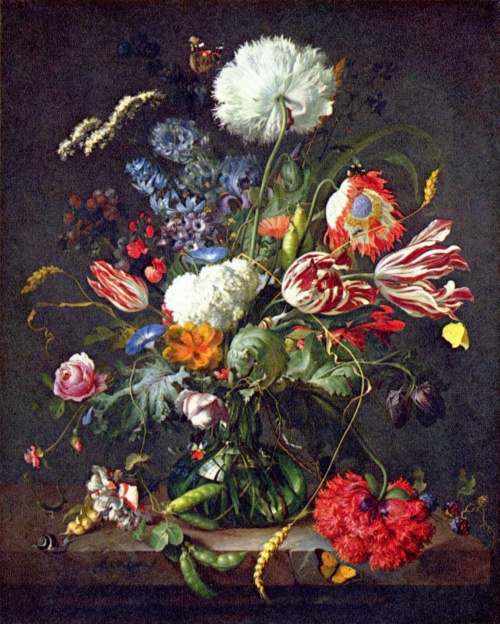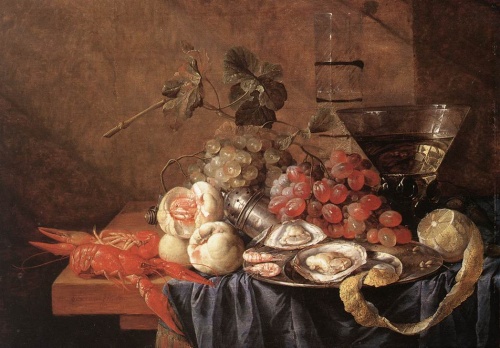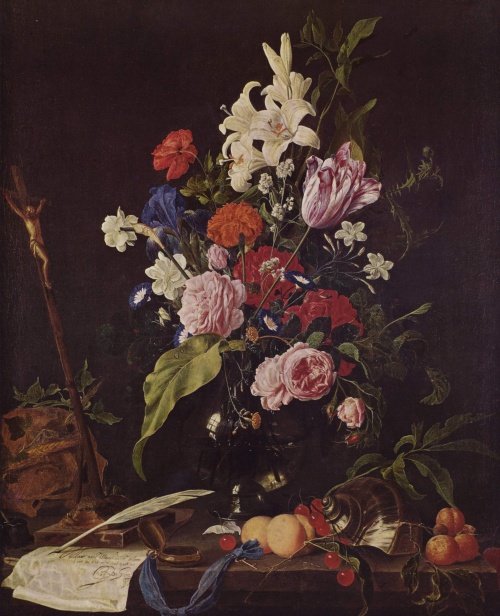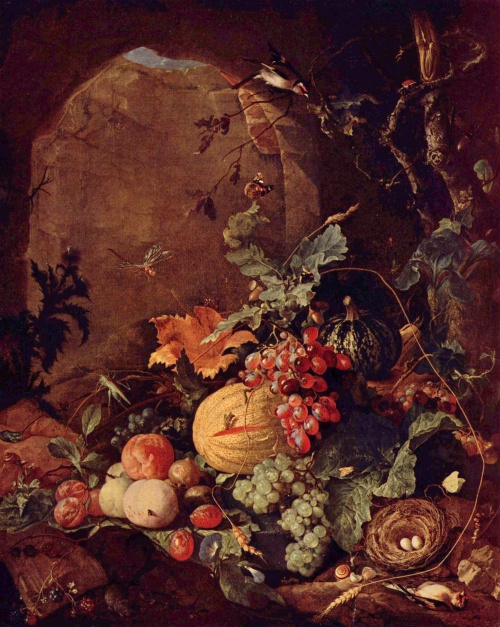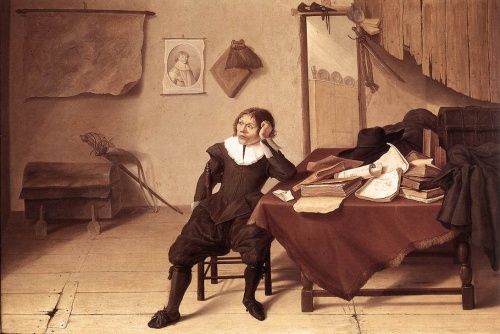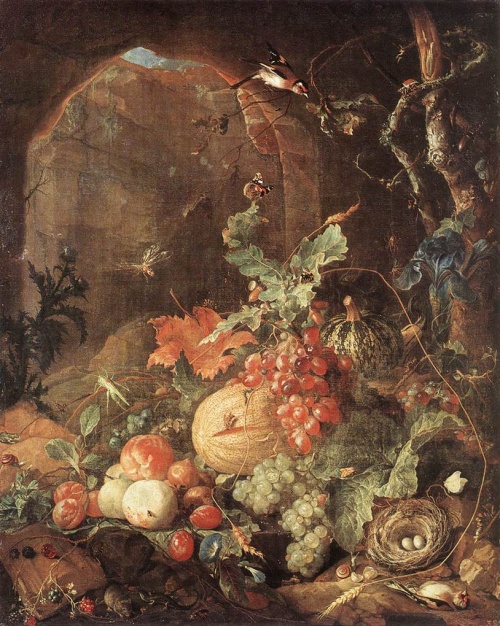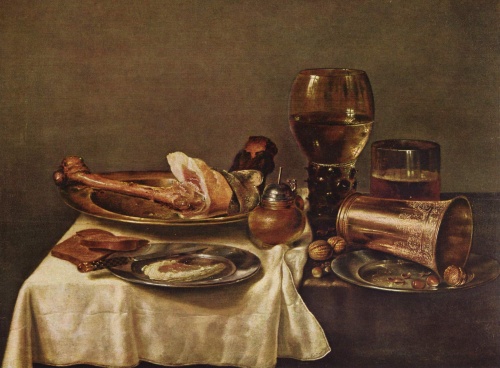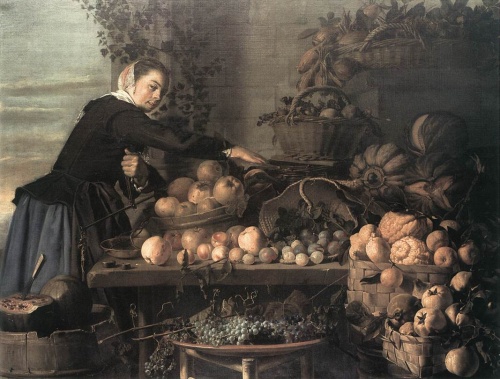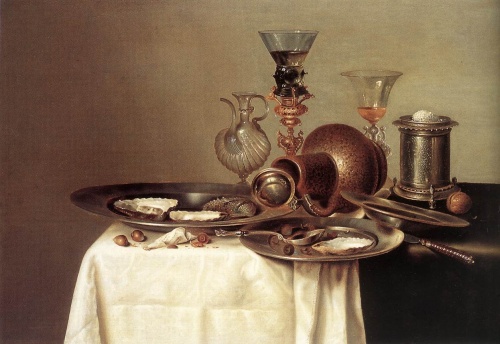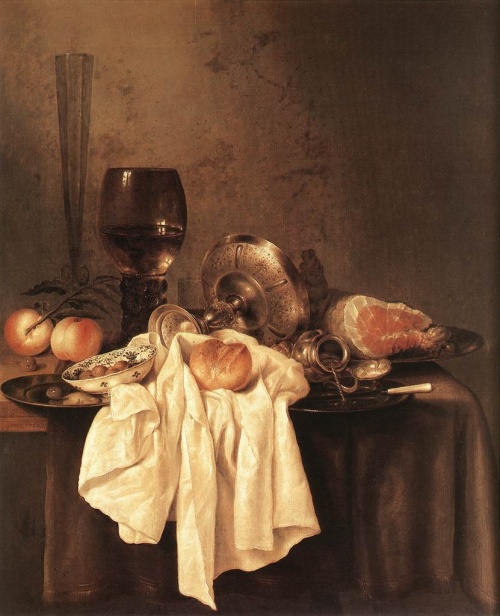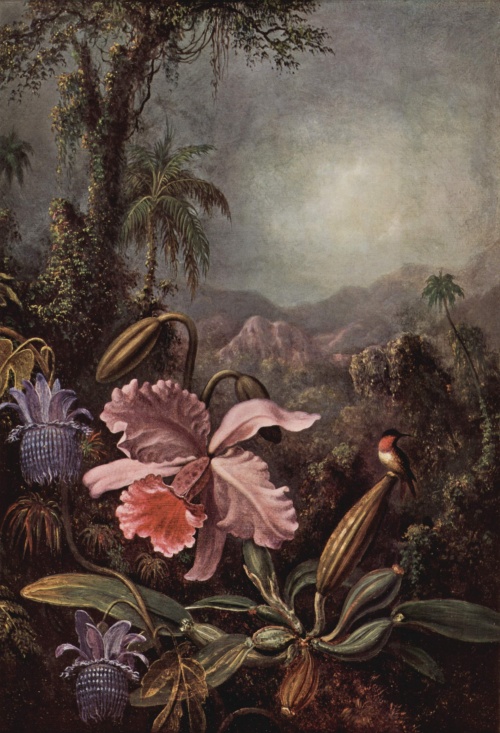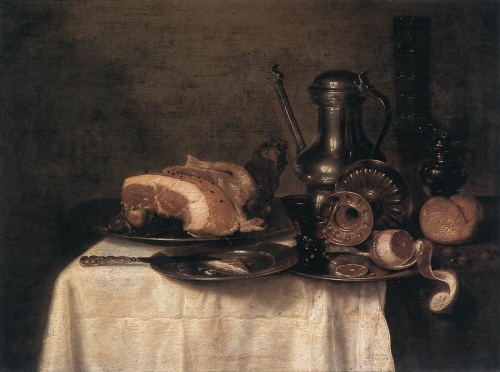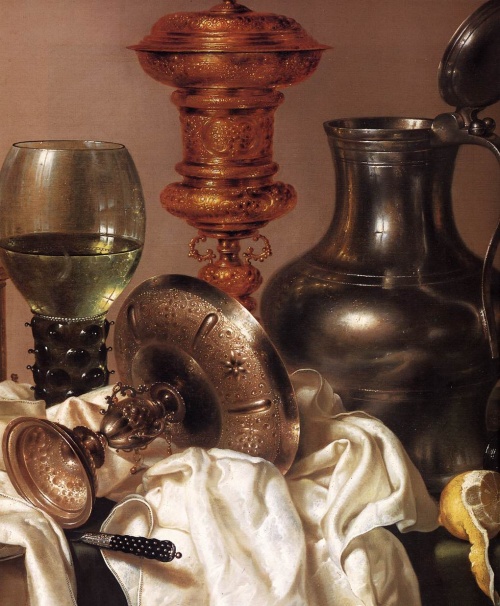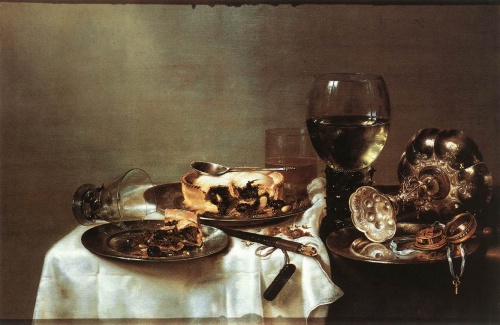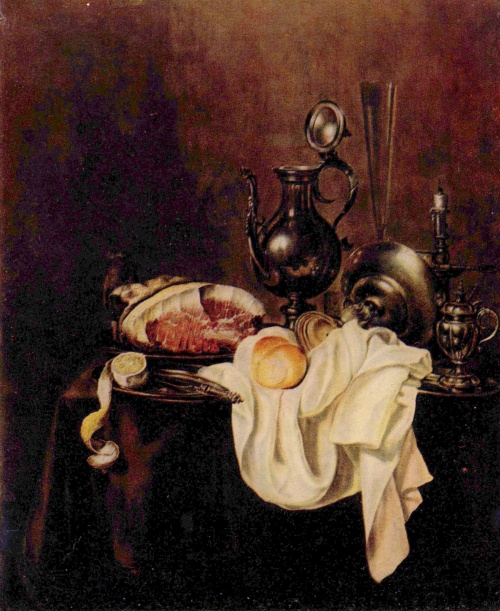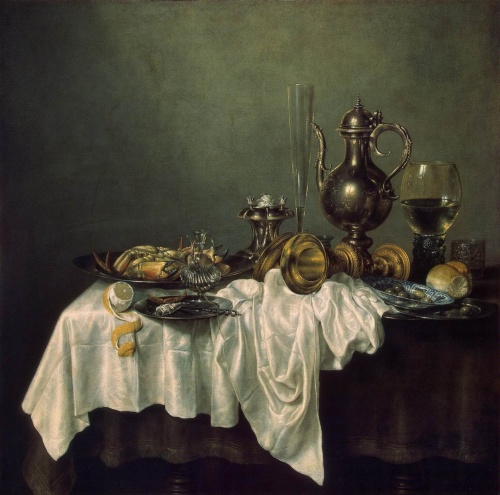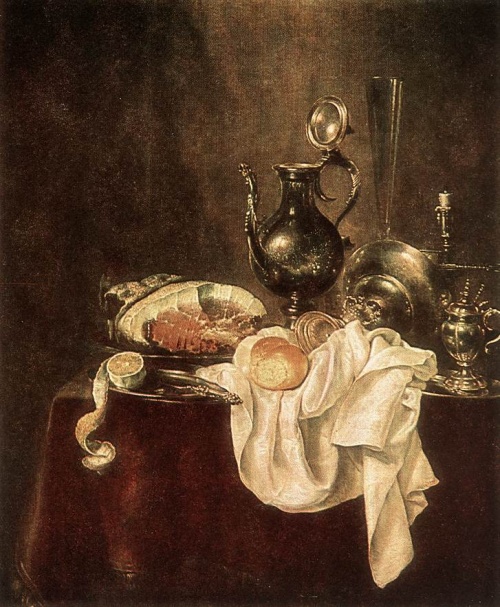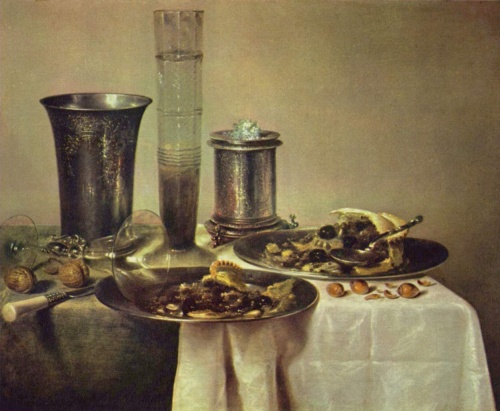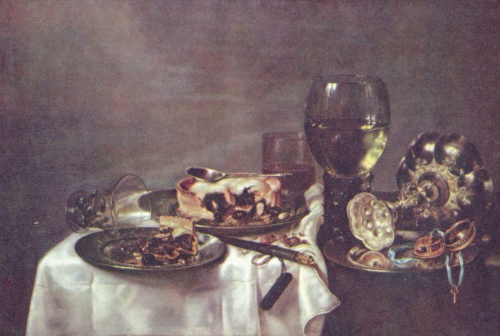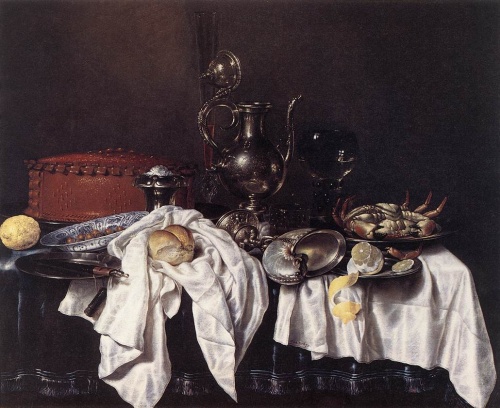Dutch painters of the 15th-18th centuries. part 22 (55 works)
Разрешение картинок от 850x636px до 2536x3547px
Bartholomeus van der HELST (b. 1613, Haarlem - d. 1670, Amsterdam)
Bartholomeus van der Helst (Bartholomeus van der Helst, Dutch. Bartholomeus van der Helst; ca. 1613, Haarlem - December 16, 1670, Amsterdam) - Dutch painter and engraver, known as a portrait painter.
Gelst, the son of an innkeeper, was born in Haarlem. In connection with his marriage, he moved to Amsterdam in 1636, lived there all his life and never left Holland. It is possible that he studied painting in Haarlem, but it is not known who taught him his first lessons (there is very little biographical information about Gelst in general). It is believed that in Amsterdam, Helst studied with a major artist of the early 17th century, Nicholas Elias Pikenoy. It is not known for certain whether he studied with Rembrandt, who lived in Amsterdam at the same time as him, but Helst learned some of the techniques of Rembrandt’s portrait style, as well as Hals.
The first known painting by Gelst dates back to 1637 - a portrait of four members of the board of trustees of the Walloon Orphanage. Stylistically, the picture is close to the works of Elias. Fame quickly came to Gelst, he received important orders. His main clients were representatives of the city elite, the main subjects were shooter festivals, the awarding of prizes, figures of managers and trustees of charitable institutions, and syndics of city corporations. In 1642, the artist painted a portrait of burgomaster Andres Bicker with his wife and son.
Six years later, Gelst’s masterpiece was created - a huge group portrait “The Celebration of the Signing of the Treaty of Munster.” In this painting, the author’s talent was clearly demonstrated in creating a harmonious multi-figure composition, while all the characters depicted are individual and easily recognizable. This painting is located in Amsterdam in the same place as Rembrandt's famous Night Watch, so that visitors can make direct comparisons between both artists in their works. For a long time this painting was considered equal to the “Night Watch”. Joshua Reynolds, who visited Amsterdam in 1781, compared this painting with all the portraits he had seen before and found in it the highest embodiment of all those qualities that should be inherent in an ideal portrait. It is worth noting that although Gelst’s fame rests primarily on portraits, he also created paintings of historical, biblical and mythological themes.
By the time Helst moved to Amsterdam, Rembrandt was at the zenith of his fame. However, van Dyck's graceful style was gaining more and more popularity, and Helst became one of the representatives of this style, wanting to please public tastes. During the 1640s. the artist became the leading portrait painter of Amsterdam and eclipsed even Rembrandt. Elaborated in detail, Helst's refined portraits, which also slightly embellished those portrayed, were liked by the public more than Rembrandt's later works, which became more and more serious, marked by deep introspection. At the same time, Gelst was one of those painters who knew how to satisfy the demands of high-ranking customers, while remaining in the position of realistic art. His painting technique was refined and virtuosic: he knew how to perfectly reproduce the material authenticity of a thing, the ease of pose and gesture of the model.
In 1654, Gelst became one of the founders of the Guild of St. Luke. Surrounded by honor and not needing anything, the artist lived in Amsterdam until the end of his life and educated his son, Lodewijk van der Gelst, who, however, turned out to be a rather mediocre painter. Among his other students there were also no ones who would deserve the attention of posterity.
During his lifetime, Gelst's influence (or rather, his style) on other artists was significant. Such students of Rembrandt as Ferdinand Bohl and Howard Flink, for the sake of this style of painting, fashionable at that time, moved away from the style of their mentor. The greatness of Gelst as a painter was recognized in the next century. To this day he occupies a high place in the Dutch school; in terms of the accuracy of his portraits and successful selection of colors, he is ranked directly after van Dyck. But in general, the artist always lacked depth and significance in conveying the human image. This is precisely what prevented his works from standing next to the portraits of Rembrandt and Hals, although most contemporaries believed that Gelst was superior to both of them. Gelst's famous works include “Portrait of a Preacher”, “The Repmaker Family”, “The Three Crossbowmen”, “Portrait of a Young Princess and Her Nurse”, “Portrait of Paulus Potter”, “Portrait of the Artist Flinck”, “Introduction of the Newlywed to the Newlywed’s Parents”, “New market in Amsterdam" (the last picture is unusual in content for the artist, since food supplies play a major role in it).
Claes van HEUSSEN (b. 1599, Haarlem - d. after 1631, Haarlem)
Harmen HALS (b. 1611, Haarlem - d. 1669, Haarlem)
Jan Davidsz. de HEEM (b. 1606, Utrecht - d. 1684, Antwerpen)
Jan Davidsz de Heem (Dutch. Jan Davidsz. de Heem; April 1606, Utrecht - 1683/1684, Antwerp) - Dutch artist and son of the artist David de Heem. Presumably Bal's student
by Tasar van der Ast.
For some time the artist worked in Leiden, in 1635 he joined the Antwerp guild of artists and the following year became a citizen of Antwerp. Around 1667 he returned to Utrecht, where he was from, and in 1672 he fled to Antwerp from the French who had captured the city.
De Heem gained worldwide recognition for his magnificent images of flowers and fruits. He combined the detail of the image down to the smallest detail with a brilliant choice of colors and refined taste in composition. He painted flowers in bouquets and vases, in which butterflies and insects often fluttered, flower wreaths in niches, windows and images of Madonnas in gray tones, garlands of fruit, still lifes with glasses filled with wine, grapes and other fruits and products. Hem masterfully used the possibilities of color and achieved a high degree of transparency; his images of inanimate nature are completely realistic. His paintings are in almost all major art galleries.
Jan de Hem's son Cornelis, born in April 1631 in Leiden, studied painting with his father, worked in The Hague and Antwerp, died in May 1695. He painted still lifes with flowers and fruits in the style of his father.
Willem Claesz HEDA (b. 1594, Haarlem - d. 1680, Haarlem)
Heda, Willem Claesz (Claeszoon) Heda (December 14, 1593/1594, Haarlem - August 24, 1680/1682, ibid.) - Dutch painter, master of still life.
Heda was born in the Netherlands, in Haarlem, and studied painting under the guidance of his father, Gerrit Willems Heda. The artist lived and worked in Haarlem all his life. He began his career as a painter with paintings of religious subjects and portraits, but then completely switched to still lifes.
In Holland in the 17th century. The genre of still life became widespread. The aesthetic principles of the still life were quite conservative: the horizontal format of the canvas, the lower edge of the table with the depicted nature is strictly parallel to the frame. The folds on the tablecloth, as a rule, ran in parallel lines, contrary to the laws of perspective, into the depths of the canvas; objects were viewed from a high point of view (to make it easier to take in them all with a glance), arranged in a line or in a circle and practically not touching. Still lifes by painters such as Nicholas Gillies and Floris Claes van Dyck were called ontbijtjes - a term usually translated as "breakfast still lifes", although strictly speaking an ontbijt was a light snack that could be taken at any time of the day. The depicted objects could carry a hidden allegorical meaning: an extinguished candle - a symbol of an ended life; silverware means earthly wealth; ham - sensual joys; lemon - external beauty, inside of which bitterness is hidden.
Heda, as well as his influence Peter Claes, are the most significant representatives of this kind of still life in Holland. These two Haarlem masters are often compared. Both of them created modest “breakfasts” with a simple set of uncomplicated items. Heda and Klas have similar greenish-gray or brownish tones, but Heda’s works are, as a rule, more carefully finished, and his taste is more aristocratic, which was manifested in the choice of objects depicted: silver rather than tin utensils, oysters rather than herring, etc. P.
By the age of forty, Heda was already a painter with an established reputation. In 1631 he received the status of master in the Haarlem Guild of St. Luke. Repeatedly (in 1637, 1643 and 1651) he was elected chairman of the guild, in 1642 and 1652. - her dean.
One of the master's sons, Gerret Willems Heda (1620-1702), also became a painter. Like his father, who supervised his studies, Gerret chose still life as his genre and painted in the same monochrome manner. Willem Heda had many students and followers, but the main one was Gerret.
The master died around 1680 in Haarlem. His influence on other artists was significant. Among the latter we can name the young Frans Hals.
The earliest known still life by Heda dates back to 1621 and is an allegory of mortality (The Hague, Broedius collection). Before us are objects viewed from a high point of view, each of which contains associations with frailty and vanity: a bowl with smoldering coals, smoking implements, an overturned glass, a skull. The coloring is in brownish-green tones and is one of the first examples of Dutch monochrome still life. Already in this early work, Heda’s skill in conveying the texture of the material was evident. We find a more balanced composition in another still life of the same year (The Hague, Royal Gallery Mauritshuis) and in “The Breakfast Table” (1631, Dresden Art Gallery). In both paintings, objects are placed against a neutral background and are united by a clear diagonal composition.
In the early 1630s. Heda resorted to the compositional solutions of Gillies and Floris van Dyck, but, unlike them, he was not afraid to break the symmetry by placing a white tablecloth on the right or left side and leaving the middle of the table uncovered. In the subsequent
in “banquet” still lifes the tablecloth moved more and more to the side, and by the end of the 1630s. It was written completely crumpled. Food previously appeared untouched, intended only for viewing and admiring, and in later still lifes signs of a meal are visible. The arrangement of objects began to have a seemingly random, natural character rather than a festive and solemn one.
Kheda loved to paint silver bowls with shimmering reflections, Venetian glass goblets, and mother-of-pearl shells. With exceptional skill he rendered reflections and highlights on shiny and smooth surfaces, as can be seen in the remarkable still life preserved in the Rijksmuseum in Amsterdam. This work is also distinguished by the sophistication of colors and sophistication of elaboration. The artist almost always used the same motifs in his works, but by changing the arrangement, he created original compositions that presented a new look at familiar objects. His still lifes are characterized by amazing precision in the rendering of objects and at the same time mysterious poetry, creating a romantic sense of mystery. In Kheda’s paintings one is captivated not only by the naturalness of the depiction of objects and the skill in conveying the form, color, and texture of every little thing in itself, but also by the lively and sincere pleasure with which the beauty of the objective world is revealed.
After 1640, Kheda's paintings became larger in size, richer and more colorful in color (for example, still lifes in the Hermitage, St. Petersburg). To achieve greater monumentality of the composition, Heda in his mature period of creativity used not the traditional horizontal, but a vertical format.
